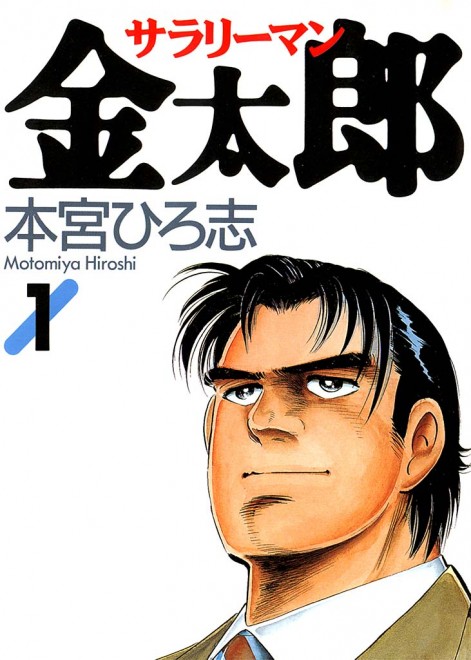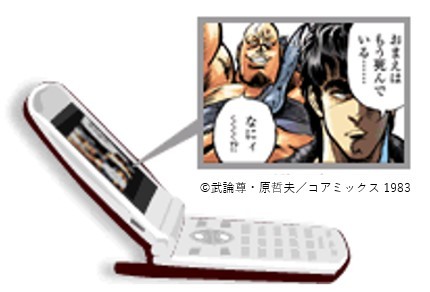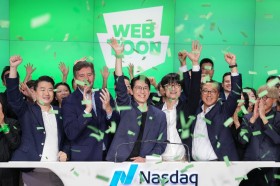The 20-Year History of Digital Comics: How Hiroshi Motomiya’s Salaryman Kintaro Paved the Way During a Harsh Early Era
August 16th marks the day of digital comics. Nowadays, the lifestyle of reading manga on your device has become commonplace, with digital comics making up 70% of the manga market. However, there was once concern that "digital comics would destroy manga culture." The breakthrough in this area was initiated by a certain veteran manga artist. How did digital comics and the manga industry find a path to coexistence and mutual prosperity? Members involved in the founding of Comic Seymour, a pioneer in the industry, reflect on the 20-year history of digital comics.

Hiroshi Motomiya's Salaryman Kintaro (C) Hiroshi Motomiya
The 2000s: The Barriers to "Reading Manga on Mobile Phones" Fell with Docomo's i-mode, 3G Mobile Phones, and Packet Flat-Rate Services
The Japanese love manga. Many people have multiple digital comic services or apps installed on their smartphones. However, it wasn’t until the lifestyle of "reading manga on smartphones" became established that manga became a daily enjoyment for people of all ages.
In fact, the manga market had been experiencing a slight decline since peaking in 1995. It began to recover in 2014, which coincides with the rapid spread of smartphones. Since then, the market has grown year by year, reaching record highs for four consecutive years since 2020, with digital comics accounting for 70% of the market.
So, when did people start reading manga digitally instead of on paper? We asked Comic Seymour, which celebrates its 20th anniversary this year, about the early days of digital comics.
"The first-ever download sale of manga in the world took place in January 1995. This marked the beginning of domestic online bookstores handling manga for PCs. Although mobile phones were already widespread at that time, downloading manga on mobile phones was not realistic due to the high image resolution and the large number of pages, combined with the slow communication speeds of mobile phones. The term 'packet death' (※) became a popular term of the time," says Shigeru Okuda of Comic Seymour.
Meanwhile, trials of reading manga on mobile devices had gradually begun.
"We initially tried a business where content was delivered to PDAs from terminals called 'Foobio' installed in public places, but it didn’t work out due to the low penetration of PDAs. However, among the various types of content delivered, such as games, music, and text, user response to manga was good, making us realize that there was indeed a demand for 'reading manga on handheld devices.' The platform that could potentially meet this need was Docomo's i-mode, which started in February 1999," says Tomoko Tada of Comic Seymour.
In 2002, Docomo launched the world's first 3G mobile phone, which significantly improved communication speeds. In June 2004, a flat-rate data service called "Packet Flat-rate" was introduced, removing the barriers to reading manga on mobile phones. Finally, in August 2004, the predecessor service to Comic Seymour, "Comic i," was launched.
※ Japanese internet slang. It refers to a situation where the charges for using packet communication (such as emails or browsing the internet) on a pay-as-you-go mobile phone become excessively high. While a modern slang term, "Giga-death," exists, this term is similar but carries a different meaning and is now considered outdated internet jargon.

The nostalgic mobile screen of "Comic i" from that era (Photo provided by Comic Seymour)
Despite now boasting one of the largest lineups in the industry, Comic Seymour started with only 22 titles.
"At first, we went around to each publisher to obtain permission to distribute their works, but the response was not positive. At a time when printed manga was the mainstream, publishers had to be cautious about digital comics," says Okuda.
In this challenging situation, it was Hiroshi Motomiya, a giant in the manga world, who became a catalyst for the growth of digital comics. More than half of the initial titles distributed were works by Hiroshi Motomiya, such as Salaryman Kintaro, Ore no Sora, and Otoko Ippiki Gaki Daishou.
"Hiroshi Motomiya had been interested in digital comics since the days of the Foobio project. We met a representative from Motomiya's production team at an event, and discussions about digital distribution proceeded positively from there. Many of the early distribution titles were introduced through connections that Mr. Motomiya kindly provided," says Okuda.
"Cutting Pages into Panels!?" Persistence Amid Opposition
One of the reasons why publishers were hesitant to approve digital distribution was the technical specifications of mobile phones.
"It seemed that people thought it would be impossible to enjoy manga on such a small mobile screen. Indeed, since mobile screens were limited, Comic i adopted a method of cutting pages into individual panels and displaying them one by one. However, it took time to convince people of the concept of cutting a spread into panels," says Okuda.
Of course, it wasn’t just a matter of cutting panels randomly. The mobile manga, meticulously hand-cut by specialists within Comic Seymour, was designed so that readers could fully enjoy the charm of the work, even one panel at a time, complete with sound effects. The love for manga that was poured into this process was surely felt by readers.
"Sales gradually began to increase, and with that, publishers started to show some understanding. We began distributing works like Shogakukan's Yami no Purple Eye and Fist of the North Star, which had been adapted into anime, and sales skyrocketed. From this point, the Comic i official site regularly ranked number one on i-mode and EZweb, holding the top spot on i-mode for 79 consecutive months and on EZweb for 302 consecutive weeks," says Tada.

Fist of the North Star was available on mobile (Image)
Two years after the service began, it had reached 50 million downloads, and five years later, it had achieved 500 million downloads. The reasons for the rapid growth of the digital comic market, which had not existed before, seem to include "discreetness" and "ease of access."
"In the early days, works with sexual content, such as Jin Ping Mei, Sundome, Futari Ecchi, and Tsumi ni Nureta Futari were popular. These were titles that might be difficult to pick up in print but could be read easily on personal devices, matching the needs of readers. Additionally, unlike the previously dominant print comic magazines, digital comics allowed readers to easily explore individual works across genres, which is another reason why digital comics were welcomed by users," says Tada.
Eventually, the device of choice shifted to smartphones, and the digital comic market grew even further. As screens became larger and the freedom of expression increased, numerous hit works originating from digital comics emerged. Far from destroying manga culture, digital comics have contributed to its growth. Today, publishers and the digital comic industry are on a path of coexistence and mutual prosperity. Comic Seymour's role in pioneering this uncharted path is significant.
(Written by Sumiko Kodama)
Source : ORICON NEWS

![[Manga Board Game] Board Games for "My Hero Academia" and "DEATH NOTE" to be Released in Winter 2024!](/upimg/thumb/1000/1351/img280/89fe7af131ca177c97f3393fbbd2b323.png)
![[Manga] Girl Meets Rock! Debuts First Public Transport Ad at Soga Station for Music Festival](/upimg/thumb/1000/1319/img280/9d27b940a5536b9116fd988ddc8f634d.jpg)
![[Feels Lonely!?] Captain Tsubasa Creator Yoichi Takahashi on Life Changes After Manga Serialization Ends: Feels Lonely Without Assistants](/upimg/thumb/1000/1186/img280/8520075e3b402176ff2f1bef8536684b.jpg)


